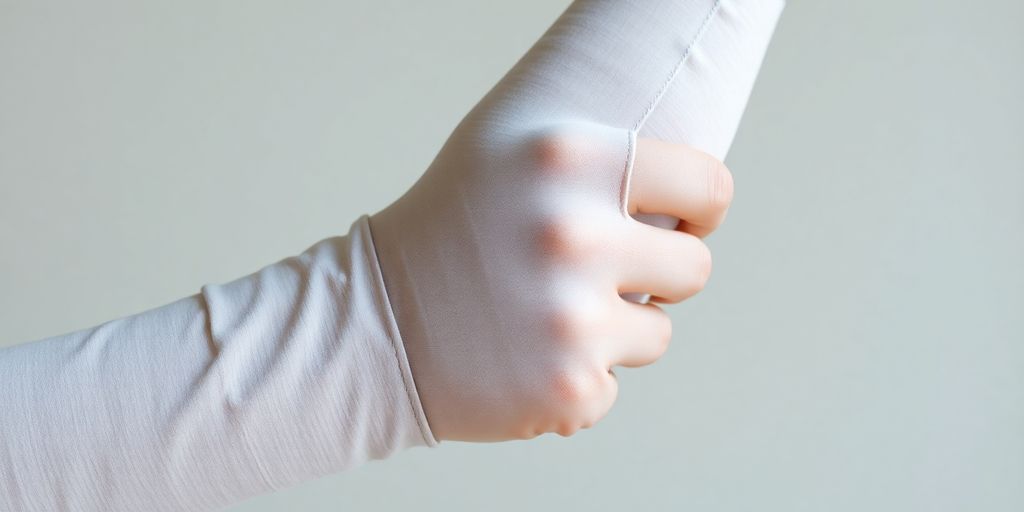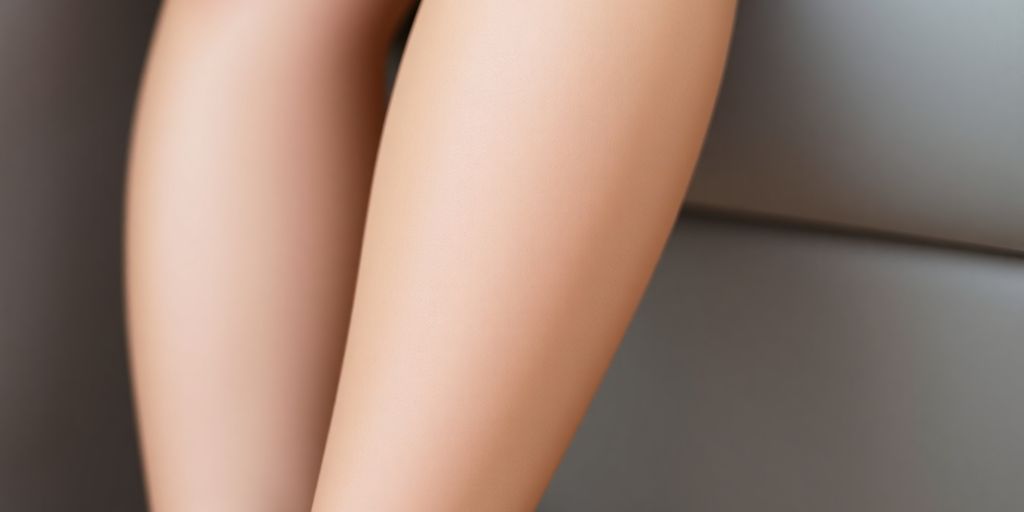Dealing with lymphedema can be pretty tough, and finding the right gear to help manage it is a big deal. Lymphedema sleeves are a key part of treatment for many people, helping to keep swelling down and make daily life a bit easier. This article will go over how to pick the best lymphedema sleeves, focusing on what makes them comfortable and how well they actually work. We'll look at different types, how they do their job, getting the right fit, and even some of the top brands out there. The goal is to help you understand what to look for so you can make a good choice for your needs.
Key Takeaways
- There are different kinds of lymphedema sleeves, like those for arms and legs, plus wraps and bandages, all designed to help with swelling.
- Lymphedema sleeves work by putting steady pressure on the affected area, which helps fluid move and stops it from building up.
- Getting the right fit is really important; you can choose between custom-made or ready-to-wear sleeves, depending on your situation.
- When picking a provider for lymphedema sleeves, look at things like how well they fit and what special features they offer.
- New fabric types and ways to wear lymphedema sleeves during daily activities can make them more comfortable and easier to stick with.
Exploring Types of Lymphedema Sleeves Available
Lymphedema sleeves are a big part of managing lymphedema. They give support and can really improve life for people dealing with this condition. Let's check out the different kinds available, like compression sleeves for arms, which are super important for healing and just feeling good every day. For legs, there are compression stockings that help keep blood flowing right. And then there are compression wraps and bandages, which are handy in different healthcare situations.
Compression Sleeves for Upper Limb Support
Compression sleeves are made to support your arm. They're especially helpful if you have lymphedema after surgery, or if you're dealing with swelling from pregnancy or carpal tunnel. These sleeves help keep your lymph fluid moving properly, which lowers the chance of problems like wounds that don't heal well. You can find them in different sizes and pressures to fit what you need, so you get good treatment and feel comfortable.
Compression Stockings for Lower Limb Care
Compression stockings are key for taking care of your legs, especially if you have lymphedema there. They put pressure on your legs to help blood flow better. This is important because it keeps fluid from building up. They're made to be worn every day to keep swelling down and help you move around easier.
Utilizing Compression Wraps and Bandages
Compression wraps and bandages are a flexible way to handle lymphedema. They're often used at the start of treatment to bring down swelling and get lymph moving.
These wraps are usually put on by trained people who know how to wrap them just right. They make sure the pressure is even, which helps the lymph flow the way it should and stops more problems from happening. They're a good option when you need something that can adjust to different levels of swelling.
Understanding the Therapeutic Mechanism of Lymphedema Sleeves
How Compression Garments Aid in Treatment
Compression garments are a big part of managing lymphedema. They help move lymphatic fluid, which can build up and cause swelling. Think of it like squeezing a tube of toothpaste – the pressure helps push the fluid where it needs to go. Getting the right fit is super important for effective treatment. If it's too tight, it can cut off circulation; too loose, and it won't do anything.
The Role of Graduated Compression in Lymphatic Flow
Graduated compression is key. This means the sleeve is tighter at the wrist or ankle and gets looser as it goes up the arm or leg. This difference in pressure helps push the fluid upwards, towards the heart. It's like a gentle massage that keeps things flowing in the right direction. Without this graduated pressure, the fluid might just stay put, and the swelling won't go down.
Preventing Complications with Consistent Compression
Wearing compression sleeves regularly can help prevent things from getting worse. Lymphedema can lead to infections, skin problems, and decreased mobility if it's not managed well. Consistent compression helps keep the swelling down, which reduces the risk of these problems. It's not a cure, but it's a way to manage the condition and improve quality of life. Here's a quick look at how different garments help:
| Garment Type | Benefit | When to Use |
|---|---|---|
| Sleeves | Manages arm swelling | After surgery, chronic conditions |
| Stockings | Improves circulation in legs | Daily wear for leg lymphedema |
| Gloves | Targets hand swelling | When doing fine motor tasks |
Using compression sleeves is a long-term thing. It's not a one-time fix. You have to wear them regularly to see the benefits. It's also important to take care of your skin and watch for any signs of infection. Talk to your doctor or therapist about the best way to manage your lymphedema and lymphedema sleeves.
Selecting the Optimal Lymphedema Sleeve Fit

Choosing Between Custom-Fitted and Ready-Made Options
When it comes to lymphedema sleeves, you've basically got two main routes to go: custom-fitted or ready-made. Custom-fitted sleeves are made specifically to your measurements. This can mean a better fit and potentially more effective symptom management. Ready-made sleeves come in standard sizes, making them easier to get and often cheaper. The choice really depends on your specific needs and budget.
Importance of Precise Measurement for Efficacy
Getting the right size is super important for lymphedema sleeves to actually work. If the sleeve is too loose, it won't provide enough compression. Too tight, and it can cause discomfort or even restrict blood flow. Accurate measurements are key to making sure the sleeve does its job properly. Providers that offer detailed measurement guides or even personalized fitting services are worth considering. A well-fitted compression garment can prevent discomfort and improve the therapeutic outcome.
Addressing Irregular Limb Shapes and Severe Swelling
Dealing with irregular limb shapes or significant swelling can make finding the right sleeve fit tricky. Standard sizes might not cut it. In these cases, custom-fitted sleeves are often the best bet. They can be tailored to accommodate unique contours and provide even compression. Some providers also offer adjustable sleeves or wraps that can be modified as swelling fluctuates. It's all about finding a solution that provides consistent and comfortable support, even when things aren't perfectly symmetrical.
Finding the right fit can be a process. Don't be afraid to ask questions, try different options, and work with your healthcare provider to find a sleeve that meets your needs. It might take some trial and error, but the payoff in terms of comfort and symptom management is worth it.
Leading Lymphedema Sleeve Providers in the Market
Choosing the right provider for your lymphedema sleeves is a big deal. It's not just about getting any sleeve; it's about finding one that fits well, feels good, and actually helps manage your lymphedema effectively. There are a few companies out there that really stand out, and it's worth taking the time to understand what makes them different.
Key Factors to Consider When Choosing a Provider
When you're looking at different lymphedema sleeve providers, think about these things:
- Product Quality: Are the sleeves made from good materials? Will they last? You want something durable that won't fall apart after a few washes.
- Fit Options: Do they offer custom-fitted sleeves, or just ready-made sizes? If you have an irregular limb shape, custom might be the way to go. Remember that precise fit is important for efficacy.
- Customer Support: How helpful are they if you have questions or problems? Do they offer guidance on measuring and fitting?
- Cost and Insurance: What's the price range, and do they work with insurance companies? Lymphedema treatment can be expensive, so understanding your coverage is key.
Finding a provider that ticks all these boxes can make a huge difference in your overall experience and how well you manage your lymphedema. It's worth doing your research and maybe even talking to other patients to get their recommendations.
Unique Features Offered by Each Provider
Each provider brings something a little different to the table. For example:
- Jobst: Known for their wide range of products and focus on medical-grade compression. They've been around for a while and have a solid reputation.
- Sigvaris: Another big name in compression, with a focus on quality and durability. They often use innovative fabrics for comfort.
- Medi: They're known for their Clima Comfort technology, which helps regulate temperature and moisture. This can be a big plus if you live in a hot climate or tend to sweat a lot.
- Lymphedivas: If you want something with a little more style, Lymphedivas offers sleeves in a variety of patterns and colors. They don't compromise on medical effectiveness, but they do add a bit of fun to the process.
Each brand offers unique features, so consider what's most important to you.
Evaluating Provider Commitment to Patient Care
It's not just about the sleeves themselves; it's also about how the provider treats their patients. Look for companies that:
- Offer educational resources and support materials.
- Have knowledgeable staff who can answer your questions.
- Are committed to ongoing research and development in lymphedema treatment.
- Actively seek feedback from patients to improve their products and services.
Ultimately, the best provider is the one that makes you feel supported and confident in your lymphedema management plan. Don't be afraid to shop around and ask questions until you find the right fit. Consider the available compression garments and what each provider offers.
Enhancing Patient Comfort and Adherence with Lymphedema Sleeves

It's not enough for lymphedema sleeves to just work. If they're uncomfortable, patients won't wear them, and the treatment won't be effective. Finding ways to improve comfort and make sleeves easier to incorporate into daily life is super important for successful lymphedema management. A recent study found that low adherence to compression garments was linked to the garments' etiology and the severity of the condition.
Innovations in Fabric Technology for Comfort
Fabric tech has come a long way, and that's good news for lymphedema sleeves. We're seeing more breathable, moisture-wicking materials that can make a big difference, especially in hot weather. Some sleeves even have antimicrobial properties to help prevent skin issues. The goal is to make sleeves that feel less like a medical device and more like regular clothing. The use of advanced knitting techniques also allows for a more consistent and comfortable level of compression.
- Breathable fabrics reduce sweating and skin irritation.
- Moisture-wicking materials keep the skin dry.
- Antimicrobial finishes help prevent infections.
Integrating Lymphedema Sleeves into Daily Activities
Let's face it: wearing a lymphedema sleeve can be a pain. It can restrict movement and make some activities difficult. But there are ways to make it easier. Think about sleeves with flexible designs that allow for a greater range of motion. Also, consider sleeves that are easy to put on and take off. The easier it is to wear the sleeve, the more likely a patient is to stick with the treatment. For lower limb care, compression stockings are a vital tool for individuals dealing with lower limb lymphedema.
- Choose sleeves with flexible designs for better movement.
- Look for easy-to-use application methods.
- Consider activity-specific sleeves for sports or work.
Finding the right balance between compression and comfort is key. Patients should be able to wear their sleeves throughout the day without feeling overly restricted or uncomfortable. This often involves trying different brands and styles to find the best fit.
Addressing Patient Preferences for Style and Function
No one wants to wear something that makes them feel self-conscious. That's why it's important to consider the style of the sleeve. Sleeves come in different colors and designs, so patients can choose something that they feel good about wearing. Functionality is also important. Does the sleeve need to be durable for work? Does it need to be discreet for social situations? Thinking about these things can help patients find a sleeve that meets their needs and preferences. For upper limb support, compression sleeves are a specialized form of medical garment designed to support the upper limb.
- Offer a variety of colors and designs.
- Consider sleeves with discreet profiles for social situations.
- Provide options for different activity levels and needs.
Managing Lymphedema with Comprehensive Sleeve Strategies
Combining Sleeves with Other Decongestive Therapies
Lymphedema management often requires a multifaceted approach. Simply relying on compression sleeves alone might not be enough for optimal results. It's common to integrate sleeves with other decongestive therapies to maximize their effectiveness. These therapies can include manual lymphatic drainage (MLD), which is a specialized massage technique, and exercises designed to promote lymphatic flow.
- Manual Lymphatic Drainage (MLD)
- Compression Bandaging
- Remedial Exercises
Combining these approaches can lead to better outcomes than using any single method in isolation. The sleeve provides continuous support, while other therapies address specific aspects of lymphatic dysfunction.
Long-Term Management and Sleeve Replacement
Lymphedema is usually a chronic condition, so long-term management is key. This includes regular monitoring of the affected limb, maintaining a healthy lifestyle, and, importantly, replacing lymphedema sleeves as needed. Over time, sleeves can lose their elasticity and compression, reducing their therapeutic benefit. How often should you replace them? It depends on factors like wear and tear, frequency of use, and the specific material of the sleeve. A good rule of thumb is to check the sleeve's compression regularly and consider replacement every 3-6 months, or as advised by your healthcare provider.
| Factor | Consideration |
|---|---|
| Sleeve Elasticity | Check for stretching or loss of compression |
| Frequency of Use | More frequent use requires more frequent replacement |
| Material | Some materials degrade faster than others |
Patient Education for Optimal Sleeve Utilization
Patient education is a cornerstone of successful lymphedema management. It's not enough to just prescribe a sleeve; patients need to understand how to use it correctly, when to wear it, and how to care for it. This includes proper donning and doffing techniques, skin care to prevent infections, and recognizing signs of complications. Empowering patients with knowledge helps them actively participate in their care and improves adherence to treatment plans. For example, understanding the importance of consistent wear, even when symptoms are mild, can prevent the condition from worsening. Also, knowing how to properly clean and maintain the sleeve extends its lifespan and effectiveness. It's also important to know about lymphedema garments and how they can help.
Conclusion
Picking the right lymphedema sleeve is a big deal for managing the condition well. It's not just about picking something off a shelf. You need to think about how well it fits, what it's made of, and if it's comfortable enough to wear all day. Getting the right sleeve can really help with swelling and make daily life a lot easier. Remember to talk to your doctor or a therapist who knows about lymphedema. They can help you figure out what's best for your specific situation. Taking the time to find the right sleeve means you're taking a good step toward feeling better and keeping your lymphedema under control.
Frequently Asked Questions
What is the main purpose of a lymphedema sleeve?
Lymphedema sleeves are special garments that apply gentle pressure to a limb. This pressure helps move the extra fluid that builds up in the limb back into the body's circulation. This reduces swelling and discomfort, making it easier for people with lymphedema to move and live their daily lives.
What types of lymphedema sleeves are available?
There are different kinds of lymphedema sleeves. Some are for the arm, often called compression sleeves. Others are for the leg, known as compression stockings. There are also wraps and bandages used for more severe swelling or during the first stages of treatment. Each type is designed for a specific part of the body and its needs.
Why is a precise fit so important for these sleeves?
The best fit is very important for a lymphedema sleeve to work well. If it's too loose, it won't provide enough pressure. If it's too tight, it can be uncomfortable or even harmful. Proper measurement ensures the sleeve applies the right amount of pressure in the right places to help fluid move effectively.
Should I choose a custom-fitted or ready-made lymphedema sleeve?
You can choose between sleeves made to order (custom-fitted) or standard sizes (ready-made). Custom-fitted sleeves are perfect if your limb has an unusual shape or if your swelling is severe, as they are made exactly for your measurements. Ready-made sleeves are good for milder swelling and are often easier to get quickly.
What should I look for when choosing a lymphedema sleeve provider?
Look for providers who offer accurate fitting services and good customer support. It's also helpful to find companies that use comfortable and breathable materials. Some providers offer unique features like special fabrics that keep you cool or different styles and colors, which can make wearing the sleeve more pleasant.
Can lymphedema sleeves be used with other treatments?
Yes, lymphedema sleeves often work best when used with other treatments. These can include manual lymphatic drainage (a special type of massage), exercise, and skin care. Your doctor or therapist will help you create a complete plan that includes the sleeve and other therapies for the best results.




Share:
Finding Relief: The Best Edema Compression Socks for Swelling
Optimizing Leg Health: The Role of Compression Socks for Supporting Chronic Venous Insufficiency